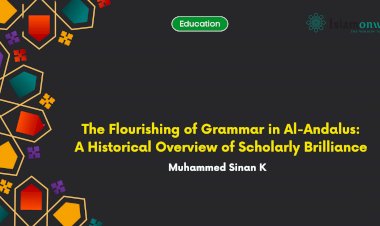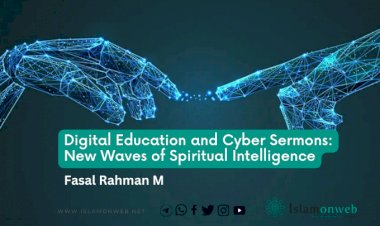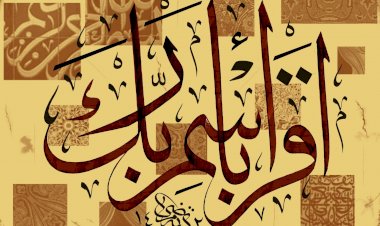The Quest for Truth: Imām al-Ghazālī’s Classification of Knowledge Seekers
Imām al-Ghazālī, an eminent figure of the 5th century Hijrī, is recognised as one of the most important fuqahāʾ, theologians, philosophers, logicians, and Sufi mystics in Islamic history. Known for his contributions to various fields of knowledge, he is widely regarded as the mujaddid of his time for his efforts in renewing Islamic thought. Among his most notable works are Tahāfut al-Falāsifah, Iḥyāʾ ʿUlūm al-Dīn, Minhāj al-ʿĀbidīn, and al-Munqidh min al-Ḍalāl. Due to his rigorous refutations of Greek-influenced philosophy, he was given the title Ḥujjat al-Islām by his contemporaries. In this article, we will briefly examine his life before exploring his classification of seekers of knowledge.
Background
Imām al-Ghazālī was born in 450 AH in Ṭūs, Khurāsān, where he received his early education. He began his studies in fiqh under Aḥmad al-Rādhkānī before moving to Jurjān to continue his learning under Abū Naṣr al-Ismāʿīlī. At the age of twenty, he went to Nayshābūr to study fiqh[1] and kalām[2] under Imām al-Juwaynī[3]. It was during this time that al-Ghazālī composed his first work on legal theory, al-Mankhūl min ʿIlm al-Uṣūl. His abilities earned him a position as Imām al-Juwaynī’s assistant at the Niẓāmiyyah madrasa, where he continued to teach until Imām al-Juwaynī passed away in 478 AH.
Al-Ghazālī’s studies under Imām al-Juwaynī were instrumental in shaping his engagement with kalām, which was becoming increasingly influenced by philosophical methods. Imām al-Juwaynī’s approach introduced al-Ghazālī to philosophy, including logic and natural philosophy, but al-Ghazālī later expressed dissatisfaction with the scope of his studies. In al-Munqidh, al-Ghazālī notes that none of the Muslim scholars before him had undertaken a thorough investigation of philosophy. This dissatisfaction led him to study the claims of the philosophers, who presented themselves as ahl al-manṭiq wa-l-burhān—people of logic and demonstration.
At the same time, al-Ghazālī also immersed himself in Sufism, studying under the guidance of al-Farmadhī[4], a well-known mystic. He was additionally introduced to the claims of the Taʿlīmiyyah (Baṭini Shiites), a group that asserted their exclusive access to knowledge through the infallible Imām. This period of study and reflection laid the foundation for al-Ghazālī’s later works, where he addressed philosophical, theological, and mystical issues while classifying seekers of knowledge according to their methods and intentions.
Intellectual Crisis
Al-Ghazālī’s first personal crisis arose from his engagement with the methodological claims of the mutakallimūn, philosophers, Taʿlīmiyyah, and Ṣūfīs. This crisis centred on the challenge of reconciling the relationship between reason and intellectual intuition. He was likely troubled by the stark contrast between the mutakallimūn and philosophers, who placed their trust in reason, and the Taʿlīmiyyah and Ṣūfīs, who emphasised supra-rational experience. According to al-Ghazālī, his resolution of this crisis did not come through rational arguments or proofs but through a light that God cast into his heart. He concluded that intellectual intuition (maʿrifah)[5] surpasses reason in its ability to grasp truth. This realisation is crucial for understanding his later classification of the sciences.
With this crisis resolved, al-Ghazālī embarked on a comprehensive study of the four groups mentioned. This period marked one of the most prolific phases of his writing. After his extensive study of kalām, in which he authored several works, al-Ghazālī turned his attention to philosophy. He engaged deeply with the writings of prominent philosophers, particularly al-Fārābī[6] and Ibn Sīnā[7], and completed his first work on the subject, Maqāṣid al-Falāsifah, which summarised Peripatetic philosophy as outlined by Ibn Sīnā. Soon after, in 488 AH, he wrote his famous critique, Tahāfut al-Falāsifah, a direct refutation of the philosophies of al-Fārābī and Ibn Sīnā. While Maqāṣid served as a preamble, Tahāfut was a polemical work, primarily addressing what al-Ghazālī saw as the philosophical errors of his predecessors. Notably, Tahāfut does not present his own affirmative views on the disputed questions; al-Ghazālī mentioned that he intended to address these in another work, Qawāʿid al-ʿAqāʾid, though it appears that this project was never completed.
According to Seyyed Hossein Nasr[8], the arrival of Tahāfut al-Falāsifah marked the end of philosophy as an independent discipline in the Arabic-speaking regions of the Islamic world. Al-Ghazālī himself classifies Tahāfut as a work of kalām, as he states in Jawāhir al-Qurʾān[9]. He explains that the purpose of Tahāfut is to refute errors and heresies, eliminate doubts, and protect the common people’s religious beliefs from the confusion caused by heretics. The influence of Tahāfut paved the way for the spread of the Illuminationist doctrines of Suhrawardī[10] and the maʿrifah of the school of Ibn ʿArabī[11]. Despite Ibn Rushd’s[12] effort to counter al-Ghazālī’s arguments in his famous Tahāfut al-Tahāfut, he was unable to overturn the significant impact Tahāfut al-Falāsifah had on Islamic thought.
During this period, al-Ghazālī also authored other key philosophical works such as Mīzān al-ʿAmal and Miḥakk al-Naẓar fī al-Manṭiq, further asserting his influence on the intellectual landscape. Additionally, al-Ghazālī wrote five works specifically against the Baṭinī Shīʿites—of which Ḥilyat al-ʿUlamāʾ fī Maʿrifat Madhāhib al-Fuqahāʾ (commonly known as al-Mustaẓhirī) is the most significant. This text sparked an extended debate between al-Ghazālī and the Baṭinī Shīʿites, which lasted for many years. Al-Mustaẓhirī was written for the caliph al-Mustaẓhir to address a religio-political threat posed by the Baṭinī Shīʿites, a sect challenging the Abbasid caliphate. Other notable works from this period include Ḥujjat al-Ḥaqq wa Qawāṣim al-Bāṭiniyyah and al-Qisṭās al-Mustaqīm, all of which contributed to the intellectual defence of ahl al-sunnah against sectarian challenges.
Spiritual Crisis
Al-Ghazālī’s second personal crisis emerged from his deep study and practice of Ṣūfism. He immersed himself in the teachings of renowned Ṣūfī masters such as al-Muḥāsibī[13], al-Junayd[14], al-Shiblī[15], and al-Bāyazīd al-Bistāmī[16], realising that the path of the Ṣūfīs was the only way to attain success in the ākhirah. This crisis was far more intense than his earlier intellectual crisis, as it required him to abandon his former way of life entirely. Al-Ghazālī was extremely affected both emotionally and physically by this experience. He left his prestigious teaching career in Baghdad to dedicate himself fully to the Ṣūfī path, living an ascetic and contemplative life for eleven years[17].
During this period, al-Ghazālī stayed with al-Nābulusī[18], a prominent Shāfiʿī scholar in Syria, where he composed significant portions of Iḥyāʾ ʿUlūm al-Dīn. It was also during this time that he performed ḥajj. However, even upon his return to Baghdad, he found himself unable to continue the intense spiritual life he had embraced. This led him to retreat to his hometown of Ṭūs, where he wrote works such as Jawāhir al-Qurʾān and the well-known Kīmiyāʾ-ī Saʿādat. His extended period of reflection and asceticism solidified his belief that the Ṣūfīs alone followed the true path to God.
Later, at the request of Fakhr al-Mulk[19], al-Ghazālī resumed teaching at the Niẓāmiyyah madrasa in Nayshābūr, where he spent three years. During this time, he wrote his autobiography, al-Munqidh min al-Ḍalāl, and a significant work on legal theory, al-Mustaṣfā min ʿIlm al-Uṣūl. Eventually, he returned to Ṭūs, establishing a madrasa for students of religious sciences and a khānqāh for Ṣūfī adepts. Until his passing in 505 AH, al-Ghazālī remained engaged in study, teaching, and spiritual devotion. He was buried outside Ṭabarān, in a grave near that of the poet Firdawsī.
Classification of Knowledge Seekers
In his autobiography, al-Munqidh min al-Ḍalāl, Imām al-Ghazālī classified the seekers of knowledge in his time into four distinct groups:
- Mutakallimūn
- Philosophers
- Taʿlīmiyyah
- Ṣūfīs
According to al-Ghazālī, these four groups encompass all the possible paths to the truth. His classification is primarily methodological, as he delineates each group based on its respective approach to truth. Al-Ghazālī’s interest in these classes of seekers stemmed from his own quest for knowledge, particularly for understanding the true reality of things. He found himself in such a deep intellectual crisis that he even doubted the reliability of sense perception and rational truths. He could not trust sense experience, as it often deceives, and he questioned whether knowledge acquired through reason could be deemed absolute.
This crisis lasted for nearly two months, during which he remained in a state of doubt. As mentioned earlier, al-Ghazālī was ultimately delivered from this crisis through a light that God cast into his heart. He regarded this divine light as the key to a greater understanding of knowledge. His journey to resolve these doubts began with an exploration of the methodology of kalām, followed by an in-depth study of philosophy, then the 'authoritative instruction' of the Taʿlīmiyyah, and finally, the path of mysticism through Ṣūfism.
Mutakallimūn (The Theologians)
Al-Ghazālī describes the mutakallimūn as those who claim to be the exponents of thought and intellectual speculation (ahl al-raʾy waʾl-naẓar), using reason to explain religious beliefs. They stood in contrast to the so-called ahl al-taqlīd, who opposed the use of reason in matters of faith. Among those who rejected the reasoning in religious discourse were groups like the Ẓāhiriyyah[20] (literalists), Muḥaddithūn[21] (traditionists), and Mujassimiyyah[22] (anthropomorphists), who condemned such practices as bidʿah (innovation) and sin.
Although al-Ghazālī’s authority in the field of kalām was widely recognised—he had studied the works of famous theologians, authored books on the subject, and become one of the leading theologians of his time—he found that kalām as a discipline accomplished its own objectives but fell short of his expectations for deeper intellectual satisfaction.
Al-Ghazālī praised the mutakallimūn for their role in defending orthodox beliefs, describing them as those sent by God to safeguard ahl al-sunnah by systematically refuting the distorted doctrines of heretical groups. He acknowledged that they fulfilled their task effectively by preserving orthodoxy. However, he was critical of certain aspects of the methodology used in kalām. One of his main criticisms was that the mutakallimūn often based their arguments on premises borrowed from their opponents, particularly the philosophers, which weakened their ability to inflict a decisive intellectual defeat on their adversaries.
Al-Ghazālī’s critique of kalām can be understood from two perspectives. First, as a mutakallim himself, he recognised the religious significance and necessity of kalām but questioned the adequacy of its methodological tools when confronting intellectual challenges. Second, as a seeker of the true nature of things, he found kalām insufficient to address his deeper existential and philosophical concerns, stating that it could not provide the intellectual cure for his spiritual malady.
Philosophers
Al-Ghazālī described philosophers as those who consider themselves the exponents of logic and demonstration. He argued that to refute a philosophical system effectively, one must first possess a comprehensive understanding of it and even surpass the knowledge of its most learned exponents. With this in mind, he conducted a thorough study of philosophy, mastering the sciences of the philosophers in less than two years. According to Osman Bakar[23], in order to establish himself as a credible critic of falsafah, al-Ghazālī extensively read and understood the works of Ibn Sīnā and al-Fārābī, the two most prominent Muslim philosophers of the time. He was also acquainted with the writings of other schools of Muslim philosophy. However, al-Ghazālī was not concerned with the division of Muslim philosophers into various schools with different methodologies. His main concern was their reliance on reason as the sole means to acquire knowledge of all things. This critique extended to the Greek masters of philosophy, including Aristotle, Plato, and Socrates. While al-Ghazālī accepted Aristotle’s refutations of Plato, Pythagoras, and other Greek philosophers, he also demonstrated what he saw as the incoherence of Aristotelianism itself.
Al-Ghazālī generally divided philosophers into three broad categories: materialists, naturalists, and theists. Materialists, who were among the earliest philosophers, denied the existence of a Creator God. Naturalists believed in God but denied the afterlife, including the concepts of heaven, hell, resurrection, and judgement. Al-Ghazālī regarded these two groups as irreligious. The third group, the theists, included more modern philosophers such as Socrates, Plato, and Aristotle, who believed in the existence of God. However, despite their belief in God, al-Ghazālī criticised the philosophical methods of all three groups, arguing that the metaphysical sciences were tainted with errors and inconsistencies.
Al-Ghazālī’s critique of the philosophers was driven by several motivations, as Osman Bakar explains[24]. His primary reasons for critiquing falsafah were threefold:
- To reserve the monopoly of spiritual knowledge for the Ṣūfīs. By minimising the importance of supra-rational experience in the methods of the philosophers, he sought to elevate the superiority of Ṣūfī approaches.
- To defend the theological stance that places reason under the authority of revelation.
- To delineate the legitimate boundaries of falsafah that would be acceptable to kalām.
Al-Ghazālī acknowledged certain areas of philosophy as legitimate, including logic, pure mathematics, and natural sciences, as long as they were not related to religious beliefs. He argued that there was no reason to reject these fields of study as long as they remained within the scope of what he considered legitimate philosophy.
Ta’limites (The Esotericists)
Al-Ghazālī describes the Taʿlīmiyyah (commonly known as Baṭini Shiites) as those who believe they alone possess the truth through "authoritative instruction" (taʿlīm) from the infallible Imam. According to the Taʿlīmiyyah, the Qurʾān contains knowledge of the true reality of things, and the key to unlocking this knowledge lies in applying the esoteric method of taʾwīl (interpretation of hidden meanings) to its verses. They further claim that this knowledge can only be accessed through the teachings of the Imams, who are considered the inheritors of the Prophet’s esoteric role in interpreting the inner meanings of the Qurʾān. The belief in the superiority of esoteric knowledge over exoteric practices forms the ideological foundation of this religious group.
Al-Ghazālī viewed Taʿlīmiyyah, specifically the Ismāʿīlīs, as a significant threat to orthodox Islam, both politically and doctrinally. In response, he dedicated several works to refuting their beliefs, with al-Mustaẓhirī being the most notable. The Taʿlīmiyyah were a part of the Fāṭimid propaganda, which had gained prominence before al-Ghazālī’s time. His criticism of them was more political than epistemological[25], as he saw them as undermining the political stability and dogmatic integrity of the Islamic state.
At the core of al-Ghazālī’s critique is his condemnation of the Taʿlīmiyyah's blind submission (taqlīd) to the authoritarian teaching (taʿlīm) of their Imams. He rejected the notion of an infallible Imam, arguing that only the Prophet Muḥammad is free from error. The Prophet’s words and actions, preserved in the Ḥadīth and Sunnah, are both necessary and sufficient to guide the Muslim community. Al-Ghazālī also accused the Taʿlīmiyyah of being poor theologians, misusing logic, and arbitrarily altering the true meanings of the Qurʾān through taʾwīl.
Furthermore, al-Ghazālī argued that the Taʿlīmiyyah's belief in the infallibility of the Imam lacks consistency. Any textual evidence affirming the Imam’s infallibility would need to be based on prophetic authority and verified by miracles. However, the recognition of prophecy and miracles requires the very reasoning and intellectual capability that the Taʿlīmiyyah tend to reject. This internal contradiction, according to al-Ghazālī, highlights the weaknesses in their epistemological and theological framework.
Ṣūfīs
Al-Ghazālī describes the Ṣūfīs as those who claim to enter into the presence of God, possessing spiritual vision (mushāhadah[26]) and enlightenment (mukāshafah[27]). He places the Ṣūfīs at the pinnacle of knowledge seekers, considering their way the most superior method for attaining knowledge of the ultimate reality. For al-Ghazālī, witnessing the Divine presence represents the highest state of spiritual experience, a direct encounter with the truth that is free from error or doubt. This spiritual vision refers to knowledge realised through the heart’s direct perception of spiritual truths, as opposed to mental concepts or intellectual reasoning. In the mystic way, the heart plays a central role, and the spiritual knowledge it attains is known as presential knowledge (ʿilm ḥuḍūrī).
The journey into the mystic way begins with the purification of the heart, a fundamental step towards attaining spiritual truth. The Ṣūfī path emphasises dhikr (the constant recollection of God), which ultimately leads to fanāʾ (complete absorption in God). This method belongs to the science of unveiling, known as ʿilm al-mukāshafah. In the initial stages, practitioners may experience visions of angels and the spirits of prophets, even hearing voices from them in their waking states. As they progress, they reach a higher state of spiritual realisation that transcends description in human language. The Ṣūfīs, through their practices, manage to achieve proximity to God, a closeness that, as al-Ghazālī notes, mirrors the beginnings of the experiences of prophets.
Al-Ghazālī himself found the "light of certainty" (nūr al-yaqīn) in the Ṣūfī path, which led him to regard their method as the most excellent of all methods for acquiring truth. He considered the Ṣūfīs to be the most distinguished knowers of truth, as their direct experiential knowledge surpassed mere intellectual inquiry. As a distinguished Ṣūfī himself, al-Ghazālī was uniquely positioned to provide an in-depth account of the Ṣūfī methodology, offering detailed insights into their spiritual practices and their unparalleled approach to truth.
Conclusion
Imām al-Ghazālī’s works continue to influence Islamic thought, particularly in the realms of theology and mysticism. He is revered as one of the greatest scholars in the history of Islam. His classification of knowledge seekers reflects the depth of his intellectual and spiritual journey through various traditions. Ultimately, al-Ghazālī concluded that the Ṣūfī path was the most effective for attaining true knowledge of reality. However, he maintained a strong connection to the kalām perspective, and his internal critique of kalām was primarily aimed at refining the rational methods employed by the mutakallimūn. While he affirmed the superiority of the religious sciences over the intellectual sciences, his severe criticism of philosophy led to the diminishing of philosophers' standing in some Muslim communities.
References
- Bakar, Osman. Classification of Knowledge in Islam: A Study in Islamic Philosophies of Science. Islamic Texts Society, 1998.
- Ġazālī, Abū Ḥāmid Muḥammad B. Muḥammad, and William Montgomery Watt. The Faith and Practice of Al-Ghazālī, 1953.
- Soleh, A. K., Rahmawati, E. S., Camila, H. G. S., & Furqona, H. T. The Truth on Al-Ghazali Perspective. International Journal of Innovative Research in Multidisciplinary Education, 2023.
- Campanini, Massimo, and Caroline Higgitt. An Introduction to Islamic Philosophy. Edinburgh University Press, 2004.
Citations
[1] Fiqh is Islamic jurisprudence that interprets and applies religious law based on the Qur'an and Sunnah.
[2] Kalam is Islamic theology that uses reason and argument to explore and defend religious beliefs.
[3] Imam al-Juwayni (1028-1085) was a prominent Sunni Islamic scholar and theologian, known for his expertise in both fiqh (Islamic jurisprudence) and kalam (theology).
[4] Fazal bin Muhammad bin Ali commonly known as "Abu Ali Farmadi" or just "Abu Ali" (1042-1085) was a saint of the Naqshbandi Golden Chain, and a prominent Sufi master and preacher from Ṭūs, Khorasan Iran. He is well known for being a teacher of Al-Ghazali during his youth.
[5] Ma'rifa is a Sufi term meaning spiritual knowledge or direct, experiential understanding of God, often attained through inner enlightenment rather than scholarly learning.
[6] Al-Farabi (870-950) was a Persian Muslim philosopher and physician known as the "Second Teacher" after Aristotle.
[7] Ibn Sina (980-1037), commonly known in the West as Avicenna, was a preeminent philosopher and physician of the Muslim world, flourishing during the Islamic Golden Age.
[8] Seyyed Hossein Nasr (b. 1933) is an Iranian-American philosopher, theologian and Islamic scholar. He is University Professor of Islamic studies at George Washington University.
[9] The Jewels of the Qur an, trans. M.A. Quasem, p. 38
[10] Shihāb ad-Dīn Yahya ibn Habash Suhrawardī (1154-1191) was a Persian philosopher and founder of the Iranian school of Illuminationism, an important school in Islamic philosophy. The "light" in his "Philosophy of Illumination" is the source of knowledge.
[11] Ibn ʿArabī (1165-1240) was an Andalusi Arab scholar, mystic, poet, and philosopher, extremely influential within Islamic thought. Ma'rifah is a central concept in Ibn Arabi's Sufi philosophy, representing the ultimate knowledge of God and reality
[12] Ibn Rushd (1126-1198) is considered one of the most important thinkers in Islamic philosophy and is often referred to as the "Commentator" due to his extensive commentaries on the works of Aristotle.
[13] Al-Muḥāsibī (781-857) was a Muslim Arab, theologian, philosopher and ascetic considered to be the founder of the Baghdad School of Islamic philosophy.
[14] Junayd of Baghdad (830-910) was a Persian mystic and one of the most famous of the early Islamic saints. He is a central figure in the spiritual lineage of many Sufi orders.
[15] Abu Bakr al-Shiblī (861-946) was an important Sufi of Persian descent, and a disciple of Junayd al-Baghdadi.
[16] Bāyazīd Bisṭāmī (804-874) was a Persian Sufi from north-central Iran. He was known to future Sufis as Sultān-ul-Ārifīn,
[17] O. Bakar, Classification of knowledge in Islam, p. 163.
[18] Shaykh 'Abd al-Ghani ibn Isma′il al-Nabulsi (1641-1731) was an eminent Sunni Muslim scholar, poet, and author of works about Sufism, ethnography and agriculture.
[19] Fakhr al-Mulk Ridwan (1077-1113) was a prominent Persian statesman and poet who lived during the 11th century.
[20] Zahirism is a Sunnī school of Islamic jurisprudence founded in the ninth century by Dāwūd al-ẓāhirī.
[21] Muḥaddithūn are scholars who heavily relied on textual interpretations and rejected the use of reason in matters of faith.
[22] Mujassimiyyah refers to a theological group or doctrine in early Islamic history that attributed physical or corporeal attributes to God, thus anthropomorphizing Him.
[23] Osman Bakar (b. 1946) is a scholar, teacher and author whose writings are known throughout many Islamic countries and by Western scholars of Islam.
[24] O. Bakar, Classification of knowledge in Islam, p. 187.
[25] Al-Ghazali: from History of Islamic Philosophy. https://www.ghazali.org/articles/gz2.htm
[26] Mushāhadah refers to a state of direct, inner vision or perception of God's presence. It is the highest form of spiritual realisation, where the seeker becomes deeply aware of God's reality.
[27] Mukāshafah is the process of spiritual unveiling or disclosure, where hidden divine truths are revealed to the seeker. It signifies the removal of veils between the soul and divine reality.
About the author :
Muhammed Habeeb is a research scholar in Aqidah and philosophy at Darul Huda Islamic University.
Disclaimer
The views expressed in this article are the author’s own and do not necessarily mirror Islamonweb’s editorial stance.
























Leave A Comment